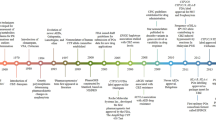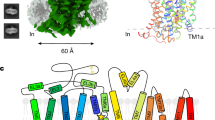Abstract
It would be likely that the genetic variants of the GTA3 gene encoding GAT-3, an astrocytic GABA transporter, may alter gamma-aminobutyric acid (GABA) neurotransmission in the synaptic cleft in the epileptic brain and cause antiepileptic drugs (AEDs) pharmacoresistance. A candidate gene association analysis with fine mapping was performed to dissect the genetic contributions of GAT3 to AEDs pharmacoresistance. Two independent case sample sets were recruited (Samples 1 and 2), and each set was divided into two groups (drug-resistant and drug-responsive) according to the treatment outcomes with AEDs. Sample1 (n=400) was used for the initial exploratory stage of the study and sample 2 (n=435) was used for confirmation of the genetic association in the replication stage of the study. A GAT3 polymorphism (GAT3 c.1572 C>T, rs2272400) was nominally associated with AEDs pharmacoresistance (PCC vs PCT/TT=0.012, Pallelic=0.01). The odds ratio (OR) for AED pharmacoresistance was 1.6 (95% confidence interval (CI), 1.11–2.24; P=0.01) in the additive models of inheritance. The statistical significance remained after we adjusted for a confounding factor, the etiology of epilepsy, at 0.012 (adjusted OR: 1.73, 95% CI: 1.13–2.67) and used Bonferroni's correction for multiple comparisons at 0.048. Importantly, the positive association of c.1572 T was reproduced in the replication stage (Pallelic=0.037, joint P-value of the replication=0.001). The results suggest that GAT3 c.1572T may be one of the contributing factors with a modest effect on AEDs pharmacoresistance in the epileptic brain, shed light on a better understanding of the underlying mechanisms and serve as an impetus for new avenues of treatment for AEDs pharmacoresistance.
Similar content being viewed by others
Log in or create a free account to read this content
Gain free access to this article, as well as selected content from this journal and more on nature.com
or
References
Kwan, P. & Brodie, M. J. Early identification of refractory epilepsy. N. Engl. J. Med. 342, 314–319 (2000).
Depondt, C. The potential of pharmacogenetics in the treatment of epilepsy. Eur. J. Paediatr. Neurol. 10, 57–65 (2006).
Regesta, G. & Tanganelli, P. Clinical aspects and biological bases of drug-resistant epilepsies. Epilepsy Res. 34, 109–122 (1999).
Kwan, P. & Brodie, M. J. Refractory epilepsy: a progressive, intractable but preventable condition? Seizure 11, 77–84 (2002).
Siddiqui, A., Kerb, R., Weale, M. E., Brinkmann, U., Smith, A., Goldstein, D. B. et al. Association of multidrug resistance in epilepsy with a polymorphism in the drug-transporter gene ABCB1. N. Engl. J. Med. 348, 1442–1448 (2003).
Kim, Y. O., Kim, M. K., Woo, Y. J., Lee, M. C., Kim, J. H., Park, K. W. et al. Single nucleotide polymorphisms in the multidrug resistance 1 gene in Korean epileptics. Seizure 15, 67–72 (2006).
Remy, S. & Beck, H. Molecular and cellular mechanisms of pharmacoresistance in epilepsy. Brain 129, 18–35 (2006).
Beck, H. Plasticity of antiepileptic drug targets. Epilepsia 48 (Suppl 1), 14–18 (2007).
Mody, I. & Pearce, R. A. Diversity of inhibitory neurotransmission through GABA(A) receptors. Trends Neurosci. 27, 569–575 (2004).
Schousboe, A., Sarup, A., Bak, L. K., Waagepetersen, H. S. & Larsson, O. M. Role of astrocytic transport processes in glutamatergic and GABAergic neurotransmission. Neurochem. Int. 45, 521–527 (2004).
Saliganicoff, L. & DeRobertis, E. Subcellular distribution of the enzymes of the glutamic acid, glutamine and g-aminobutyric acid cycles in rat brain. J. Neurochem. 12, 287–309 (1965).
Schousboe, I., Bro, B. & Schousboe, A. Intramitochondrial localization of the 4-amino-butyrate-2-ketoglutarate transaminase from ox brain. Biochem. J. 162, 303–307 (1977).
Durkin, M. M., Smith, K. E., Borden, L. A., Weinshank, R. L., Branchek, T. A. & Gustafson, E. L. Localization of messenger RNAs encoding three GABA transporters in rat brain: an in situ hybridization study. Brain Res. Mol. Brain Res. 33, 7–21 (1995).
Commission on Classification and Terminology of the International League Against Epilepsy. Proposal for revised clinical and electroencephalographic classification of epileptic seizures. From the Commission on Classification and Terminology of the International League Against Epilepsy. Epilepsia 22, 489–501 (1981).
Commission on Classification and Terminology of the International League Against Epilepsy. Proposal for revised classification of epilepsies and epileptic syndromes. Commission on Classification and Terminology of the International League Against Epilepsy. Epilepsia 30, 389–399 (1989).
Kim, M. K., Nam, T. S., Choi, K. H., Jang, S. Y., Kim, Y. O. & Lee, M. C. Usefulness of direct sequencing of pooled DNA for SNP identification and allele-frequency determination compatible with a common disease/common variant hypothesis. Genet. Mol. Res. 9, 772–779 (2010).
Gabriel, S. B., Schaffner, S. F., Nguyen, H., Moore, J. M., Roy, J., Blumenstiel, B. et al. The structure of haplotype blocks in the human genome. Science 296, 2225–2229 (2002).
Qin, Z. S., Niu, T. & Liu, J. S. Partition-ligation-expectation-maximization algorithm for haplotype inference with single-nucleotide polymorphisms. Am. J. Hum. Genet. 71, 1242–1247 (2002).
Komar, A. A. Silent SNPs: impact on gene function and phenotype. Pharmacogenomics 8, 1075–1080 (2007).
Shastry, B. S. SNPs: impact on gene function and phenotype. Methods Mol. Biol. 578, 3–22 (2009).
Waagepetersen, H. S., Sonnewald, U. & Schousboe, A. Compartmentation of glutamine, glutamate and GABA metabolism in neurons and astrocytes: functional implications. Neuroscientist 9, 398–403 (2003).
White, H. S., Sarup, A., Bolvig, T., Kristensen, A. S., Petersen, G., Nelson, N. et al. Correlation between anticonvulsant activity and inhibitory action on glial GABA uptake of the highly selective mouse GAT1 inhibitor 3-hydroxy-4-amino-4, 5, 6, 7-tetrahydro-12-benzisoxazole (exo-THPO) and its N-alkylated analogs. J. Pharmacol. Exp. Therap. 302, 636–644 (2002).
Suzdak, P. D. & Jansen, J. A. A review of the preclinical pharmacology of tiagabine: a potent and selective anticonvulsant GABA uptake inhibitor. Epilepsia 36, 612–626 (1995).
Kälviäinen, R., Brodie, M. J., Duncan, J., Chadwick, D., Edwards, D. & Lyby, K. A double-blind, placebo-controlled trial of tiagabine given three-times daily as add-on therapy for refractory partial seizures. Northern European Tiagabine Study Group. Epilepsy Res. 30, 31–40 (1998).
Wu, Y., Wang, W. & Richerson, G. B. Vigabatrin induces tonic inhibition via GABA transporter reversal without increasing vesicular GABA release. J. Neurophysiol. 89, 2021–2034 (2005).
Kinney, G.A. GAT-3 transporters regulate inhibition in the neocortex. J. Neurophysiol. 94, 4533–4537 (2005).
Raiteri, L., Stigliani, S., Zedda, L., Raiteri, M. & Bonanno, G. Multiple mechanisms of transmitter release evoked by ‘pathologically’ elevated extracellular [K]: involvement of transporter reversal and mitochondrial calcium. J. Neurochem. 80, 706–714 (2002).
Richerson, G. B. & Wu, Y . Role of the GABA transporter in epilepsy. Adv. Exp. Med. Biol. 548, 76–91 (2004).
Templeton, A. R. Epistasis and complex trait. in Epistasis and the Evolutionary Process (eds. Wade, M., Brodie, B III., Wolf, J.) 41–57 (Oxford University Press, Oxford, 2000).
Cordell, H. J. Epistasis: what it means, what it doesn’t mean, and statistical methods to detect it in humans. Hum. Mol. Genet. 11, 2463–2468 (2002).
Moore, J. H. The ubiquitous nature of epistasis in determining susceptibility to common human diseases. Hum. Hered. 56, 73–82 (2003).
Thornton-Wells, T. A., Moore, J. H. & Haines, J. L. Genetics, statistics and human disease: analytical retooling for complexity. Trends Genet. 20, 640–647 (2004).
Kim, M. K., Moore, J. H., Kim, J. K., Cho, K. H., Cho, Y. W., Kim, Y. S. et al. Evidence for epistatic interactions in antiepileptic drug resistance. J. Hum. Genet. 56, 71–76 (2011).
Nyholt, D. R. Genetic case-control association studies–correcting for multiple testing. Hum. Genet. 109, 564–565 (2001).
Semah, F., Picot, M. C., Adam, C., Broglin, D., Arzimanoglou, A., Bazin, B. et al. Is the underlying cause of epilepsy a major prognostic factor for recurrence? Neurology 51, 1256–1262 (1998).
DeLorenzo, R. J., Sun, D. A. & Deshpande, L. S. Cellular mechanisms underlying acquired epilepsy: the calcium hypothesis of the induction and maintainance of epilepsy. Pharmacol. Ther. 105, 229–266 (2005).
Badawy, R. A., Harvey, A. S. & Macdonell, R. A. Cortical hyperexcitability and epileptogenesis: understanding the mechanisms of epilepsy-Part 2. J. Clin. Neurosci. 16, 485–500 (2009).
Acknowledgements
We are grateful to Young Joo Kim (PhD, Korea Research Institute of Bioscience and Biotechnology) for his comments on bioinformatics used in this manuscript. This study was supported by a grant from the Korea Health 21 R&D Project, Ministry of Health, Welfare & Family Affairs, Republic of Korea (A080307) and by a grant (CRI-10005-1) of Chonnam National University Hospital Research Institute of Clinical Medicine.
Author information
Authors and Affiliations
Corresponding author
Ethics declarations
Competing interests
The authors declare no conflict of interest.
Additional information
Supplementary Information accompanies the paper on Journal of Human Genetics website
Supplementary information
Rights and permissions
About this article
Cite this article
Kim, DU., Kim, MK., Cho, YW. et al. Association of a synonymous GAT3 polymorphism with antiepileptic drug pharmacoresistance. J Hum Genet 56, 640–646 (2011). https://doi.org/10.1038/jhg.2011.73
Received:
Revised:
Accepted:
Published:
Issue date:
DOI: https://doi.org/10.1038/jhg.2011.73



